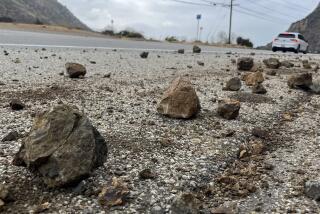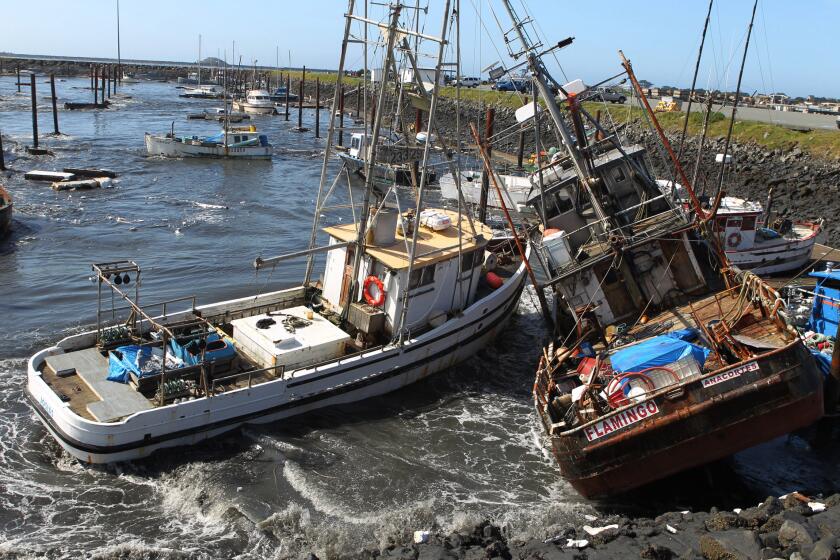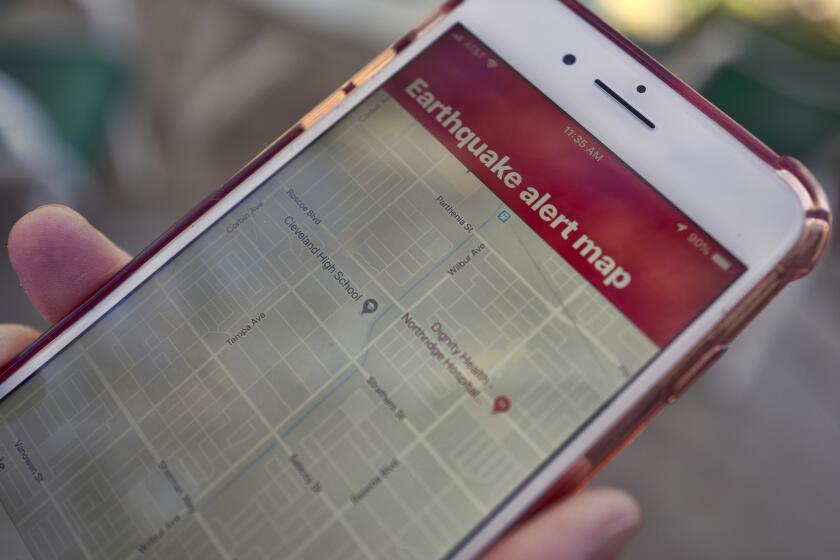Seismologists Set Off Blasts to Map Faults : Quakes: As part of a three-year study, scientists will measure subterranean explosions to find out where the heaviest shaking will occur during temblors.
- Share via
Earthquake scientists began three nights of small subterranean blasts along a line from the Mojave Desert to Seal Beach early Wednesday in a new phase of a three-year project to map potentially dangerous faults and other structures six to 10 miles below the surface, where big earthquakes are usually generated.
Gary Fuis, the U.S. Geological Survey scientist in charge of the $600,000 experiment, said there were no calls from the public about the first 20 blasts between 1:30 and 4:30 a.m. under the Mojave. The largest explosion, of about 4,000 pounds of ammonium nitrate at a depth of 60 feet, was measured as a magnitude 2.6 by Caltech, Fuis said.
Fuis said when smaller, 900-pound blasts are set off early today and Friday under populated areas, mainly in the San Gabriel Valley and parts of Orange County, some residents will feel them “as small bumps in the night.”
An array of 630 seismographic instruments placed six inches below the surface--230 provided by the Geological Survey of Canada--are recording waves from the blasts to develop subterranean images that may tell scientists where to expect the heaviest shaking during earthquakes.
The project is primarily funded by the National Science Foundation and the U.S. Geological Survey’s Earthquake Hazards Reduction Program, and is being partially staffed by the Southern California Earthquake Center headquartered at USC.
Fuis said it will be a year before the first rough images are available. He said that at the end of the three years he expects the data to support his contentions that building codes are not stringent enough to cope with the strong shaking estimated to be possible from earthquakes.
An earlier phase of the project this month, in the ocean off Long Beach, featured a research ship firing thousands of small bursts of compressed air to create sound waves detectable by the instruments as far inland as the Mojave. Fuis said critics’ concerns of injury to sea life proved unfounded.
More to Read
Sign up for Essential California
The most important California stories and recommendations in your inbox every morning.
You may occasionally receive promotional content from the Los Angeles Times.










